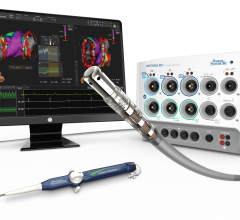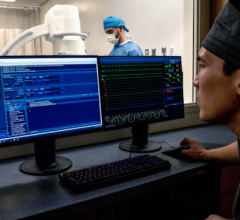
Going into 2009, proponents of coronary CT angiography (CTA) are confident that the scan’s ever-increasing acceptance will lead to it becoming the gold standard in imaging for patients with low or intermediate risk of coronary artery disease. From a business perspective, the CTA remains a driving force in the cardiac CT market.

Proponents and researchers of microbubble contrast-enhanced cardiac ultrasound say the technology will eventually evolve to match the diagnostic quality of CT and nuclear perfusion images without the radiation and at a faction of the cost.
A new ultrasound system for radiology and vascular applications, the LOGIQ E9, fuses ultrasound images with images from other imaging modalities like CT and MR.
Providing exceptional cardiovascular care for patients to achieve the best possible outcomes is the number one goal for ...
Physio-Control's LIFEPAK 20e defibrillator/monitor is an enhancement of the LIFEPAK 20 defibrillator/monitor, offering a more powerful Lithium-ion battery that doubles ECG monitoring time and the run time of other parameters such as noninvasive pacing and pulse oximetry.
Hospitals today need software fast enough to accommodate high-volume clinical areas like cardiology, surgery and ...
Vascular Solutions Inc. offers the EXPRO Elite Snare, a one-piece medical device designed for the retrieval and manipulation of objects located in the cardiovascular system, including coils, balloons, catheters and guide wires.
Cardiac positron emission tomography (PET) is growing in popularity among cardiologists because it provides the ability ...
Q-Stress 4.0 by Cardiac Science features new Q-Exchange connectivity, which reportedly enhances bi-directional data ...
Mennen Medical recently released a new cath lab hemodynamic monitoring system, the Horizon XVu, which is embedded with a reportedly ultra modern interface and analysis system, includes network ability and efficient workflow connectivity as part of Mennen’s total IT solution. The new software displays eight main focus areas.

This summer we asked readers of Diagnostic & Invasive Cardiology to submit the names and feats of the most innovative heart hospitals in the U.S. Two of those submissions are highlighted here to explain how one significantly decreased its door-to-balloon time and how the other is separating itself from competing hospitals with outstanding customer service. Cutting Door-to-Balloon Time
When performing radiofrequency (RF) ablation to treat cardiac arrhythmia, medical professionals must balance the safety ...
Cook Medical said the FDA approved its improved Zenith Abdominal Aortic Aneurysm (AAA) Iliac Flex Legs and Z-Trak Introduction System, made for use with the Zenith Flex AAA Endovascular Graft.
Navilyst Medical offers an enhanced PICC Convenience Kitting and a new Xcela Power Injectable Port catheter provide a means for long-term delivery of fluids and medications including chemotherapy, and a new EZ Huber Safety Infusion Set offers a dual-action safety mechanism designed to reduce the risk of bloodborne pathogen exposure.
October 31, 2008 - TCT India Live is a three-day symposium designed for interventional cardiologists, clinical ...
Change Healthcare Cardiology Hemodynamics is an integrated hemodynamic monitoring system for monitoring vital signs and ...

There is considerable interest in being able to clearly identify vulnerable plaque (VP) and research efforts are intensifying. Several invasive imaging technologies claim to detect VP, and while the link between VP identification, plaque rupture and clinical events has yet to be firmly established, progress is being made in the research.
October 30, 2008 - Thoratec Corp. this week notified healthcare professionals of a worldwide correction of the HeartMate ...

There is skepticism among cardiologists whether flat panel detectors can help lower the X-ray dose more than using traditional image intensifiers in the cath lab. There was a story concerning this in the last issue of DAIC which said flat panel detectors are replacing image intensifiers partly because they help lower the X-ray exposure to patients.

 October 30, 2008
October 30, 2008









